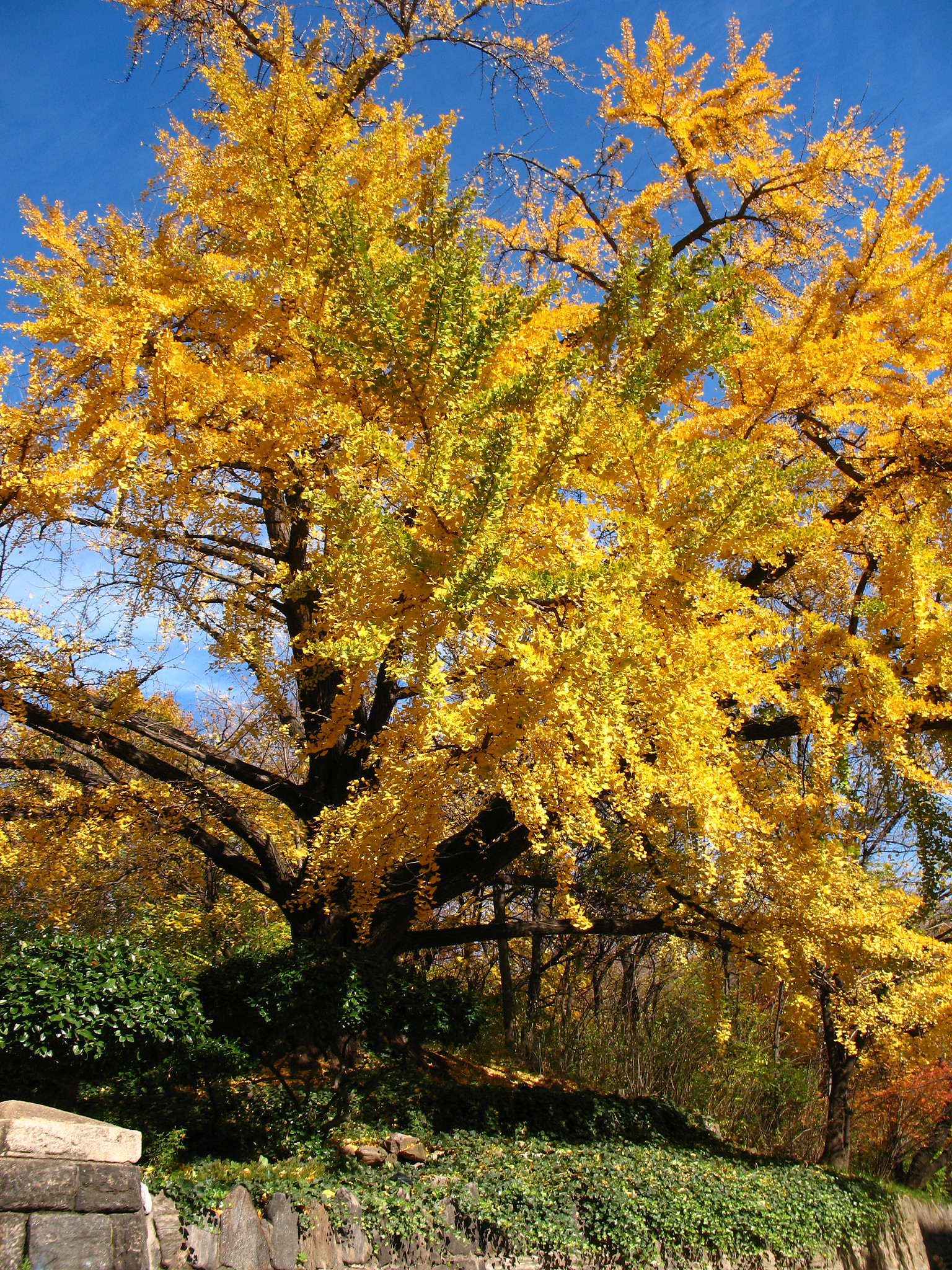Walk down some streets of New York, and you may spot a familiar sight: trees dressed in yellow leaves, falling and blanketing the sidewalk as a result. You’ll probably notice it even if you don’t see its leaves, to be honest—it’s also pretty notorious for bearing fruit whose smell most can only describe as “unpleasant” at best.

Indeed, you’ve probably walked past a tree known as a ginkgo tree, and it’s well-known throughout parts of the city. What may surprise you, however, is that the tree has quite a history, stretching back thousands of years to the mountains of China. Moreover, while I don’t wish to spoil the twist in this piece, “quite a history” is an understatement, as the history of this peculiar plant goes way back—millions of years.
Ancient Roots
There are five (5) currently-known extant divisions of seed-bearing plants, known as the spermatophytes: the angiosperms, which consist of all flowering plants; the cycads, palm-looking plants; the conifers, or cone-bearing plants; the gnetales, which include desert shrubs like the unique Welwitschia; and, finally, the ginkgos, which include the very plant we’re discussing right now.
There’s a reason why the plant group the ginkgos belong to is named after them: it’s not just because they’re the group’s most famous member; they’re the group’s only surviving member. The last of its ginkgo peers disappeared from the fossil record by the end of the Pliocene epoch some 2.58 million years ago, leaving central China as the last bastion of the surviving members of the ginkgos.

Additionally, fossils discovered in North Dakota prove that Ginkgo biloba, the last remaining extant species, has remained virtually unchanged for 60 million years, with its genetic ancestors tracing back 170 million years to the Jurassic Period. This remarkable longevity and resilient evolutionary strategy makes the ginkgo one of the oldest tree lineages on Earth and has earned them the “living fossil” moniker.
Survival Strategy
In its long history, ginkgo faced significant challenges, including near extinction. It is believed that competition from more modern flowering plants, which rapidly evolved and diversified about 130 million years ago, pushed ginkgos to the brink. Despite all this, ginkgos survived, as sparse as they are, and for good reason.
Ginkgo trees have several unique features that set them apart from modern trees. They are dioecious, meaning individual trees are either male or female, and reproduction occurs when pollen from a male tree fertilizes a seed on a female tree, much like the human fertilization process. Ginkgo trees also exhibit the rare phenomenon of potentially switching sex, with males occasionally producing female branches as a fail-safe mechanism for reproduction.
Another distinctive trait of the ginkgo is its stinky seeds. Female ginkgos produce seeds covered in a fleshy layer that emits a foul odor, often compared to human vomit. This smell may have evolved to attract animals that liked smelly things, facilitating seed dispersal, thus making this property a testament to the tree’s adaptability.

Their stinky fruit may also imply that the ginkgo’s foul-smelling fruit may be advertising itself to be eaten by animals just as old as its lineage is—that is, animals that may no longer exist: an evolutionary anachronism.
Human Adoption
Ginkgo’s association with humans played a pivotal role in its survival. Once their toxic outer layer is removed, ginkgo seeds are edible, resembling pistachios. People in China started planting and consuming ginkgo seeds, bringing this species back from the brink of extinction.

German naturalist Engelbert Kaempfer introduced Ginkgo to Europe after a late-17th-century trip to Japan. Today, ginkgo trees are common along the U.S. East Coast, known for their resistance to insects, fungi, and air pollution.
Although it was once thought to be extinct in the wild, a wild population of ginkgo was discovered in western China in the early 20th century, and later, evidence pointed to the existence of additional wild populations in the southwest of the country. These wild populations hold great genetic diversity, making them valuable resources for breeding programs to improve the domesticated species.
Looking To the Future
Overall, the ginkgo tree’s story is a testament to the intertwined paths of evolution and human intervention, making it not just a living fossil but also a remarkable symbol of resilience and adaptability in our natural world.
Next time you pass the ginkgo’s distinct yellow leaves on a rainy sidewalk, remember the millions of years plus a little human intervention needed to get that leaf that close to you. (Maybe don’t mind the smell of the nearby fruit too much.)
References
- Cohn, R. (2013, May 1). The Life Story of The Oldest Tree on Earth. Yale E360; Yale University. https://e360.yale.edu/features/peter_crane_history_of_ginkgo_earths_oldest_tree
- Gibbens, S. (2023, October 4). Ginkgo trees nearly went extinct. Here’s how we saved these ‘living fossils.’ National Geographic; National Geographic. https://www.nationalgeographic.com/environment/article/ginkgo-trees-nearly-went-extinct-how-we-saved-these-living-fossils
- Tang, C. Q., Yang, Y., Ohsawa, M., Yi, S., Momohara, A., Su, W., Wang, H., Zhang, Z., Peng, M., & Wu, Z. (2012). Evidence for the persistence of wild Ginkgo biloba (Ginkgoaceae) populations in the Dalou Mountains, southwestern China. American Journal of Botany, 99(8), 1408–1414. https://doi.org/10.3732/ajb.1200168
- Watt, A. (2016). The trees of Tianmushan. International Dendrology Society; International Dendrology Society. https://www.dendrology.org/publications/dendrology/the-trees-of-tianmushan/
- Zhou, Z., & Zheng, S. (2003). The missing link in Ginkgo evolution. Nature, 423(6942), 821–822. https://doi.org/10.1038/423821a











